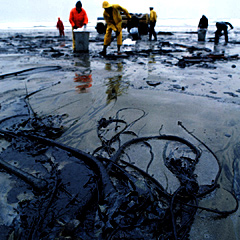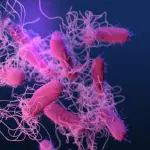
The U.S.’s largest environmental disaster occurred in 2010 during a blowout on the BP rig while  drilling the Macando exploration well 41 miles offshore of Louisiana.  The incident killed 11 workers. Fines currently have ranged up to $4 billion whereas cleanup expenses are in the range of $14 billion. Another $9 billion has been paid out to individuals and businesses as compensation.
Fact 1. From the ecology perspective, the BP oil spill killed marsh plants 15 to 30 feet from the shoreline implicating the rate of erosion resulting in a permanent habitat loss.
Fact 2. Â Louisiana was experiencing erosive marsh loss due to the channelization of the Mississippi when the oil spills aggravated the situation doubling the erosion rate.
Fact 3. Â Â The fauna of the marshlands along Louisiana’s shores, especially crabs, insects, and spiders were reduced by 50 percent due to exposure to the oil.
Fact 4. Â The tiny organism called zooplankton was responsible for the oil making its way into the ocean’s food chain. Zooplankton serve as food for baby fish and shrimp and was a conduit for the movement of oil pollutants into the food chain even after the well was capped.
Fact 5. Â BP took more than 85 days to cap the well by which time 172 million gallons of crude oil had spilled into the ocean.
Fact 6. Tampa City, Florida is seeking more than $50 million in damages from BP to compensate for the loss of revenue from tourism, business, and local tax revenues. Other lawsuits are still ongoing.
Fact 7. The oil spill was broken up by pumping 800,000 gallons of dispersants directly at the flow of oil up to the time of capping the oil well in July, 2010. The chemical dispersants continue to remain within deep under waters forming  a new challenge for the ecosystem.
Fact 8. Â Â The dispersants were trapped within subsurface plumes of oil and gas around 3,000 feet under the water and did not biodegrade as expected.
Fact 9. The effect of the dispersants can cause environmental imbalances impacting  deep-ocean animals who have capabilities to live under high pressures with low oxygen levels sans sunlight. The precarious introduction of dispersants into the environment has far-reaching consequences on the deep-ocean animals and their habitat.
Fact 10. The largest oil spill to date occurred during the Persian Gulf War of 1991 when Iran released about 240 million tons of crude oil into the Persian Gulf.









Leave a Reply